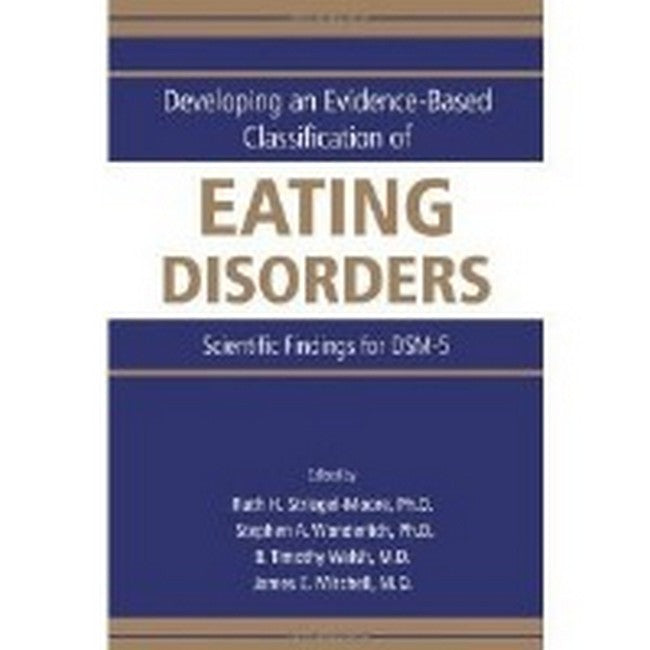Foreword. Introduction. Part 1: Improving the Definition of Symptoms and Syndromes of Eating Disorders. Rethinking the nosology of eating disorders. Eating disorder not otherwise specified: theoretical and empirical advances since the publication of a meta-analysis covering 1987-2007. Current and future directions for the assessment of the cognitive criteria for anorexia nervosa. Characterization, significance, and predictive validity of binge size in binge eating disorder. Eating behavior in obese binge eating disoder, obese non-binge eating disorder, and non-obese control participants: a naturalistic study. Loss-of-control eating as a predictor of weight gain and the development of overweight, depressive symptoms, binge drinking, and substance use. Part 2: Empirical Approaches to Classification: Methodological Considerations and Research Findings. Empirical approaches to the classification of eating disorders. Latent structure analyses of eating disorder diagnoses: critical review of results and methodological issues. Empirical taxonomy of patients with eating disorders. Validating eating disorder classification models with mortality and recovery data. Latent structure of bulimic syndromes: an empirical approach utilizing latent profile analyses and taxometric analyses. Part 3: Eating and Feeding Disorders in Childhood and Adolescence. Classification of eating disturbance in children and adolescents: proposed changes for DSM-5. Validation of a diagnostic classification of feeding disorders in infants and young children. Eating disorders in children and adolescents: diagnostic differences and clinical challenges. Loss of control over eating in children and adolescents. Diagnostic classification of eating disorders in children and adolescents: how does DSM-IV-TR compare to empirically derived categories? Part 4: Cultural Considerations in the Classification of Eating Disorders. Culture and eating disorders classification. Eating disorders in Native American populations: a review of prevalence studies. Eating disorder symptoms of Native American and white adolescents. Should non-fat-phobic anorexia nervosa be included in the DSM-5? Eating disorders in Japan: cultural context, clinical features and future directions. Comparison of female Japanese and Canadian eating disorder patients on the Eating Disorder Inventory. A latent profile analysis of the typology of bulimic symptoms in an indigenous Pacific population: evidence of cross-cultural variation in phenomenology. Index.

